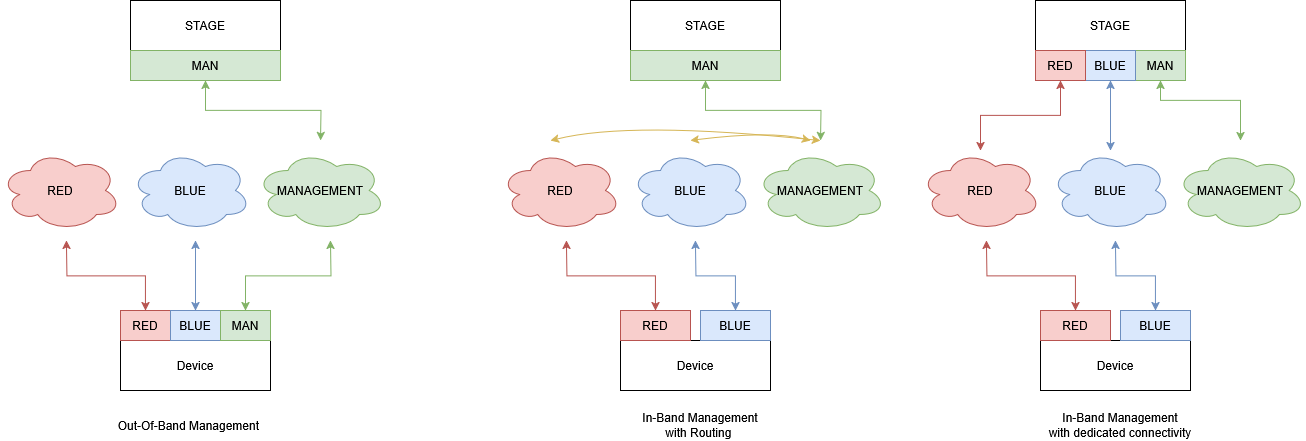Network Considerations
Networking connectivity is required for STAGE to communicate with devices under STAGE's control, to provide the user interface to the operators and engineers and also to provide northbound APIs to other systems communicating with STAGE.
See also chapter Network Architecture .
Network Data Types
In an intercom / broadcast network, in general, there are two categories of data being carried on IP networks:
Management data that consists of the signalling, control, and health information communicated with connected endpoint devices. This data is used by a control network to operate these devices, in this case through STAGE.
Media data that consists of high-bandwidth SMPTE ST 2110 audio, video, and ancillary flows.
Interface Types
Management Interface
Network interfaces used for management purposes typically are connected to a control network which connects the management interfaces of other endpoint devices in the system. In the simplest case, the server hosting the STAGE system will be connected with a single network interface to a management network.
Ensure that Network Interface used for the management network has its gateway set.
Using Multiple Management Interfaces
In some scenarios, it might be required to have network connectivity with multiple networks from the same STAGE instance for network segmentation. For this, multiple network interfaces must be configured at the Linux host level.
If you are using multiple network interfaces, make sure at least one of them has its gateway set and it is always available.
Media Interface(s)
STAGE itself does not perform media processing, so connections to media networks (e.g. “RED” and “BLUE” networks) are generally not required for STAGE nodes, except in use cases where in-band management traffic is required (see following chapter).
In-band vs. Out-of-Band Management
Most devices have two or more network interfaces that are connected to separate network segments (switches). One network interface is used for management purposes (out-of-band management) by connecting it to the management network segment. The remaining network interfaces are used for media streaming. STAGE nodes will have their network interfaces connected to the management network segment to provide connectivity to the management interface of all device endpoints.
Some devices may not have a separate network interface for management purposes. In this case, the management functionality is combined into the media interface(s) (in-band management). In this scenario, STAGE's management interfaces will need to have connectivity to the device’s media interfaces (for example, through an appropriate routing set up in the network itself) or the STAGE host must be connected with a dedicated network interface to these network segments.

